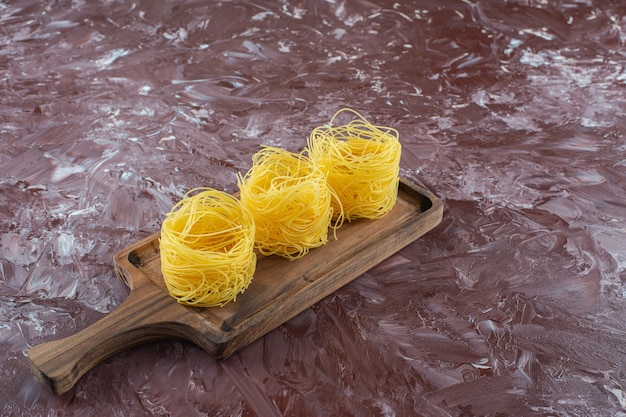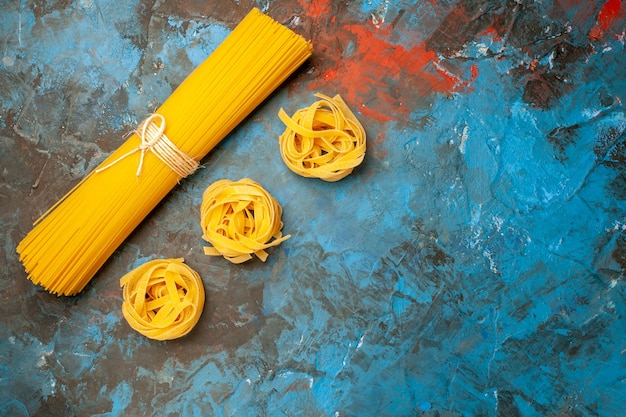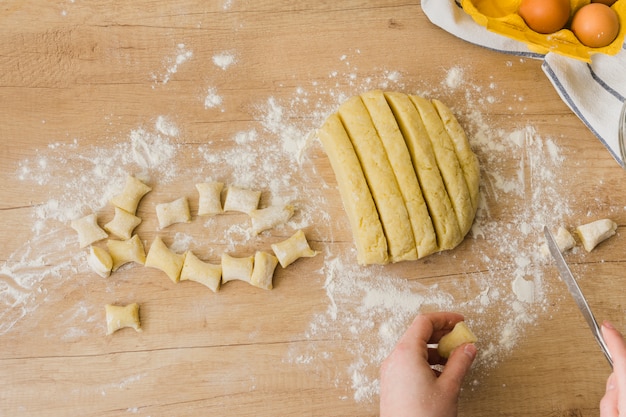Let's be honest, spaghetti squash has a bit of a reputation for being fussy. But I'm here to tell you, that couldn't be further from the truth. Once you know the simple tricks, cooking spaghetti squash whole is a breeze, and it's a truly rewarding experience. Not only is it super easy, but the results are absolutely delicious.
Imagine this: you’ve got a beautiful golden squash, bursting with those gorgeous strands of "spaghetti" – it’s a real showstopper. And trust me, the flavor is just as good as it looks!
So, buckle up, grab your favourite apron, and let’s dive into the ultimate guide to cooking spaghetti squash whole.
(Part 1) Choosing the Right Spaghetti Squash

The first step on our culinary journey is picking the perfect spaghetti squash. Think of it like choosing a ripe avocado – you want one that’s ready to go, bursting with flavour.
Picking the Right Squash: A Few Tips
Go for a Squash with a Deep Orange Colour: This is a sure sign that the squash is ripe and ready to be cooked. Avoid any that look pale or have a green tinge.
Avoid Squash with Soft Spots or Bruises: A bruised squash might not cook evenly, and could even be going bad.
Choose a Squash that Feels Heavy for Its Size: A good, heavy squash is full of moisture and will be juicy and flavorful. You want to avoid a squash that feels light and hollow, as this suggests it's not fully ripe.
(Part 2) Prepping Your Spaghetti Squash

Now that you've got your perfect squash, it's time to get ready for cooking. Don't worry, it's not as intimidating as it sounds!
Washing and Drying Your Squash
First, give your squash a thorough wash to remove any dirt or grime. Remember, it’s going straight into the oven, so a clean squash is a happy squash! Then, dry it completely with a clean kitchen towel. This step is crucial to avoid any messy splattering in the oven. You can also try patting it down with a paper towel for extra dryness.
Cutting and Removing the Seeds
Alright, this is where things get a little more hands-on. You'll be slicing your squash in half, lengthwise.
Here's the trick I've learned over time: it's easier to cut the squash in half when it's sitting on a cutting board. I also find a large spoon is more useful than a knife for scooping out the seeds, but a sharp knife is still necessary to cut the squash. Just be careful, it can be a bit slippery!
Once you've got your two halves, use a spoon to scoop out the seeds and fibrous centre. These can be composted, roasted (they're surprisingly delicious!), or even saved for planting new squash next year.
Adding Flavor
This is the fun part! You can add flavor to your squash before cooking by adding butter, olive oil, garlic, herbs, spices, or even a dash of salt and pepper. I love to add a mix of garlic powder, onion powder, and paprika for a lovely smoky flavor.
Adding Flavor: A Few Ideas
Classic: A simple drizzle of olive oil and a pinch of salt and pepper.
Garlic Lovers: A generous amount of minced garlic or garlic powder.
Herby Delight: Fresh herbs like rosemary, thyme, or sage.
Spicy Kick: A sprinkle of chili flakes or cayenne pepper.
Sweet and Savory: A combination of maple syrup and cinnamon.
(Part 3) Cooking Your Spaghetti Squash

Now we're getting down to business! There are a few different ways to cook spaghetti squash, but roasting is my absolute favourite. It brings out the natural sweetness and creates a lovely, caramelized flavour.
Roasting Your Squash: The Basics
Preheat your oven to 190°C (375°F). Line a baking sheet with parchment paper, then place your squash halves, cut-side down, on the sheet. This helps ensure even cooking. You can add a little water to the bottom of the pan if you like, which can help prevent the squash from sticking.
Roast for about 45 minutes to an hour, or until the squash is tender and easily pierced with a fork.
Alternative Cooking Methods
If you’re not keen on roasting, steaming is a great alternative. Simply place your squash halves in a steamer basket over a pot of boiling water and steam for about 30 minutes, or until tender.
Checking for Doneness
How do you know if your squash is ready? Once it’s cooked through, it’ll be soft and easily pierced with a fork. If you're unsure, give it a few more minutes in the oven. It's better to err on the side of overcooking than undercooking!
cooking time Tips
Smaller Squashes: They'll generally cook faster, often within 30-45 minutes.
Larger Squashes: Expect to roast them for closer to an hour.
Overcooked Squash: Don't worry, it won't ruin the dish. The "spaghetti" might be a little softer, but it'll still be delicious.
(Part 4) Getting the "Spaghetti" from Your Squash
The moment you’ve been waiting for: getting those beautiful, golden strands of spaghetti squash!
Scooping Out the "Spaghetti"
Take a fork and gently scrape the cooked flesh from the skin. The flesh will come off in long strands, resembling spaghetti, hence the name!
Saving the Skin
Don't throw away the skin! It's full of flavour and can be used in a variety of ways. You can roast it for a crispy, savory snack, or use it as a base for a soup or casserole.
Storing Leftovers
If you have any leftover spaghetti squash, you can store it in an airtight container in the refrigerator for up to 3 days. It’s also great to freeze. I like to freeze it in individual portions so I can use it in future dishes. Just be sure to defrost it completely before using it.
(Part 5) Using Your Spaghetti Squash
Now, the fun part: what can you do with all that delicious spaghetti squash? The possibilities are truly endless!
Savory Dishes
Spaghetti Squash Carbonara: Toss the "spaghetti" with eggs, pancetta, and Parmesan cheese for a classic Italian-inspired dish.
Spaghetti Squash with Pesto: This is one of my go-to recipes. Just toss the "spaghetti" with pesto and some grated Parmesan cheese for a simple and delicious meal.
Spaghetti Squash Salad: Combine the "spaghetti" with chopped vegetables, herbs, and a light dressing for a refreshing and healthy salad.
Spaghetti Squash Casserole: Bake the "spaghetti" with a cheesy sauce, ground meat, and vegetables for a satisfying and comforting casserole.
Spaghetti squash soup: Add the "spaghetti" to a creamy soup for a hearty and flavorful meal.
Spaghetti Squash Stuffed with Sausage: A flavorful dish that can be served as a main course or a side dish.
Spaghetti Squash with Roasted Vegetables: Roast the squash alongside your favorite vegetables for a simple and delicious meal.
Sweet Dishes
Spaghetti Squash with Cinnamon: Mix the "spaghetti" with cinnamon, nutmeg, and a little sugar for a sweet and comforting dessert.
Spaghetti Squash Pudding: Combine the "spaghetti" with eggs, milk, and sugar for a light and fluffy pudding.
Spaghetti Squash Fritters: Mix the "spaghetti" with eggs, flour, and spices, then fry them up for a delicious breakfast or snack.
Spaghetti Squash Pancakes: A fun and easy way to use up leftover spaghetti squash.
Spaghetti Squash Pie: A sweet and savory pie filled with spaghetti squash, apples, and spices.
(Part 6) Nutritional Benefits of Spaghetti Squash
Spaghetti squash is a nutritious veggie that's packed with vitamins, minerals, and antioxidants. It's low in calories, fat, and sodium, and a good source of vitamin C, potassium, and fibre. It's a real nutritional powerhouse!
Table of Nutritional Benefits
| Nutrient | Amount per 1 cup | % Daily Value |
| --------------- | --------------- | --------------- |
| Calories | 40 | 2% |
| Total Fat | 0.5g | 1% |
| Sodium | 1mg | 0% |
| Potassium | 519mg | 14% |
| Vitamin C | 23mg | 25% |
| Dietary Fibre | 6g | 24% |
(Part 7) Exploring Different Varieties of Squash
Spaghetti squash isn't the only kind of squash out there! There are many other varieties, each with its own unique flavor and texture.
Other Popular Squash Varieties
butternut squash: Known for its sweet flavor and smooth, creamy texture, butternut squash is perfect for soups, stews, and pies. It’s also delicious roasted or pureed.
acorn squash: With its distinctive shape and nutty flavor, acorn squash is great roasted or baked. It’s often stuffed with savory fillings.
kabocha squash: This Japanese squash has a sweet and slightly nutty flavor and a firm, dense texture. It’s often used in Japanese cuisine and is delicious roasted, steamed, or baked.
Pumpkin: A classic fall favorite, pumpkin is versatile and can be used in both sweet and savory dishes. It's a staple in pies, soups, and breads.
(Part 8) FAQs
1. Can I eat the skin of the spaghetti squash?
Yes, you can! The skin is edible, but it's a bit tough. You can roast it for a crispy snack or use it as a base for a soup or casserole. I like to use it in my spaghetti squash soup!
2. Can I freeze spaghetti squash?
Yes, you can freeze spaghetti squash for up to 3 months. I like to freeze it in individual portions so I can use it in future dishes. Just make sure to defrost it completely before using it. You can freeze it raw or cooked, but I find that cooked spaghetti squash freezes better.
3. How long does it take to cook a spaghetti squash?
It typically takes about 45 minutes to an hour to roast a spaghetti squash in the oven. If you're steaming it, it will take about 30 minutes. Keep in mind that cooking time can vary depending on the size of the squash. If you're not sure, check for doneness with a fork.
4. How do I know if a spaghetti squash is ripe?
A ripe spaghetti squash will have a deep orange colour, feel firm and heavy, and have no soft spots or bruises. If you tap it gently, it should sound hollow.
5. What are some other ways to cook spaghetti squash?
Besides roasting and steaming, you can also grill or microwave spaghetti squash. I've even seen recipes for baked spaghetti squash, which can be a fun alternative! You can also cook it in a pressure cooker or slow cooker, but I find roasting or steaming gives the best results.
And there you have it, folks! Your complete guide to cooking spaghetti squash whole. Now go forth and unleash your inner squash master! You’ve got this!
Everyone is watching

How to Cook Frozen Lobster Tails Perfectly: A Step-by-Step Guide
RecipesLobster. Just the word conjures up images of lavish meals, special occasions, and a taste of luxury. But let's...

Pigs in a Blanket Cooking Time: How Long to Bake for Perfect Results
RecipesAh, pigs in a blanket. Just the name conjures up images of those delightful little parcels of crispy pastry en...

Pork Fillet Cooking Time: How Long to Cook It Perfectly
RecipesPork fillet, or tenderloin as it's sometimes called, is a real favourite in our house. It's so versatile, and...

The Ultimate Guide to Tender, Juicy Pulled Pork
RecipesRight, let's talk pulled pork. It's one of those dishes that just screams "comfort food," doesn't it? I mean...

The Ultimate Guide to Cooking Sweet Potatoes: From Roasting to Mashing
RecipesSweet potatoes. Just the name conjures up images of warm, comforting dishes, bursts of vibrant color, and a to...
